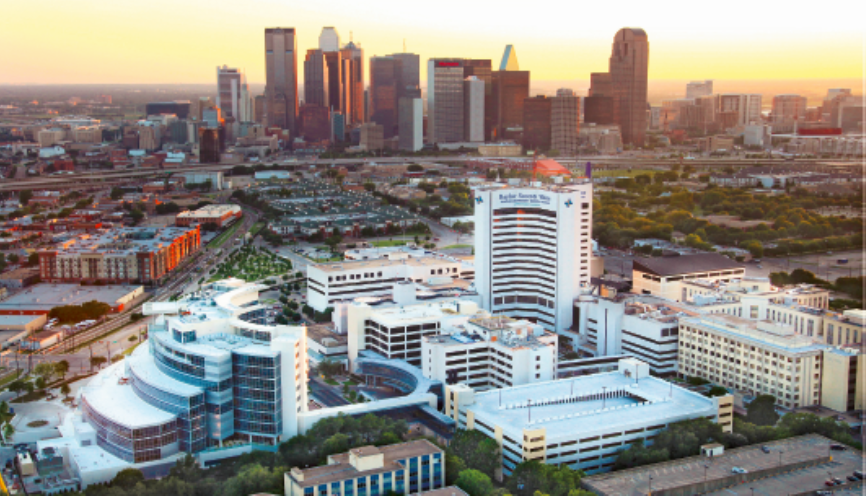BUMC Residency Program
The BUMC Department of Emergency Medicine has a long and successful history of providing undergraduate and graduate medical education delivered and managed by Residency Trained Board Certified/Eligible Emergency Physicians.
Approximately 50% of our attendings are former Chief Residents. Our faculty have completed fellowships in Cardiovascular Emergencies, Emergency Medicine Administration, Emergency Medical Services, and Emergency Ultrasound.
Many of our faculty are active in research and publication of peer-reviewed journal articles and medical textbooks. We support faculty involvement in local, state, and national organized medicine groups to include Texas College of Emergency Physicians, American College of Emergency Physicians, Emergency Medicine Residents Association, etc.
With a 1:2 ratio of attendings to residents, we foster an engaging learning environment that will grant residents unparalleled access to the highest quality emergency medicine education available during their rotations.
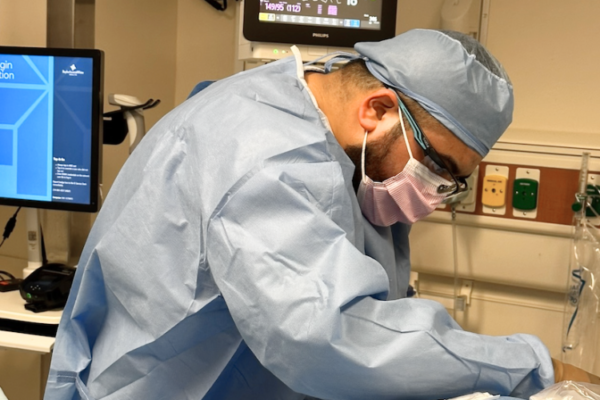
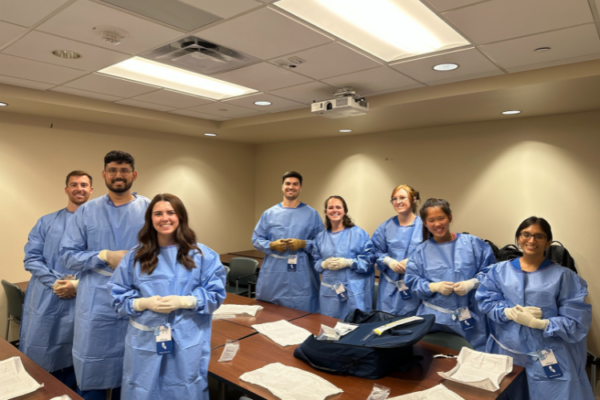
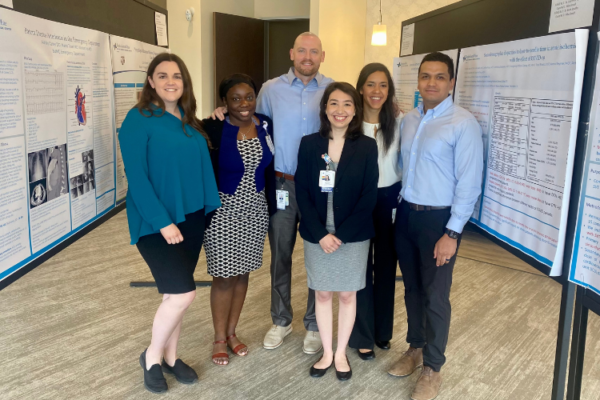
Residency Curriculum
Residents will receive the highest quality education in emergency medicine. Our unique curriculum includes an emphasis on critical care management that will equip our residents with the knowledge and skillset needed to provide high-quality care leading to a superior patient experience.
The clinical environment provides an incredible hands-on experience for residents, with great diversity in pathology, and is augmented by our innovative didactic education. Our curriculum allows residents the opportunity to gain exposure to areas of individual interest during their training, providing them the opportunity to make decisions regarding potential fellowship and independent practice career choices.
Rotations
The first year (PGY-1) of training provides residents with the clinical skills and knowledge needed to become well-rounded Physicians.
Residents begin with a comprehensive 1-month orientation to help familiarize them with the emergency department and refresh their Emergency Medicine clinical knowledge. They will receive hands-on procedural training while integrating into clinical shifts. The month is also designed to help residents integrate with their classmates and the BUMC family via social gatherings.
After the orientation month, residents will spend time off-service acquiring skills and knowledge essential to practicing Emergency Medicine in the specialized areas listed below.
There is an emphasis on caring for critically ill patients with multiple intensive care months, giving residents excellent training in procedures and resuscitations. Residents receive close supervision and clinical teaching by experienced academic and clinical faculty involved in bedside teaching during their intern year.
While in the emergency department, residents work approximately 20 x 10-hour shifts each month during the PGY-1 year.
1-month EM Orientation (BUMC)
4-months BUMC ED
1-month EM Skills (US and Anesthesia)
0.5-month L&D (BUMC)
1-month Orthopedics (BUMC)
1-month Trauma (BUMC)
1-month CCU (BUMC)
1-month MICU (BUMC)
1.5-months CMC ED**
** Pediatric Emergency Medicine is a one-month block experience for PGY-1 Residents
Rotations
In the PGY-2 year, the Emergency Medicine resident continues to gain experience in caring for critically ill patients and spends the majority of this year in the emergency department learning how to care for multiple sick patients at once. Residents will also spend time off service in the medical and trauma ICUs. Residents will gain pediatric Emergency Medicine experience via a longitudinal track at Children’s Medical Center Dallas. They will have a month to initiate an elective research project and spend time off-service on toxicology and EMS rotations.
While in the emergency department, PGY-2 residents work approximately 19 x 9-hour shifts.
8-months Adult EM (BUMC)*
1-month PICU (McLane)
1-month MICU (BUMC)
1-month STICU (BUMC)
1-month Toxicology and EMS
* Pediatric Emergency Medicine is a longitudinal experience for PGY-2 and PGY-3 Residents
Rotations
During their PGY-3 year, residents have increasing autonomy in patient care during their emergency department shifts. They become leaders in the department and move into a supervisory role as they learn to manage multiple critical patients. They will continue gaining pediatric Emergency Medicine experience via a longitudinal track at Children’s Medical Center Dallas. Residents also have elective time available to pursue clinical or research interests.
While in the emergency department, PGY-3 residents work 18 x 9-hour shifts each month.
9-months Adult EM (BUMC)
1-month Administration (BUMC)
2-months Research and Elective
Advanced Ultrasound
Administration
Regional Anesthesia
Palliative Care
Pharmacy
Costa Rica
Community Emergency Medicine
Medical Spanish
Social Determinants of Health
Forensic Medicine
Our program provides a robust clinical and academic learning experience for residents and incorporates operations management training to prepare our residents to fully integrate into every aspect of emergency medicine upon graduation.
Frequently Asked Questions
Is There a Minimum USMLE Step 1 Score Cutoff?
Do You Accept COMLEX In Lieu of USMLE Step 1?
Do You Accept IMG Applicants?
How Does Your Program Address Diversity in Emergency Medicine?
What is the Timeline for Interview Invitations?
What is the Application Deadline?
How is BUMC Unique Amongst Other Emergency Medicine Residencies?
Is this Program Accredited?
Is this a 3 or 4 Year Program?
How Much Emergency Department Time is Built into the Clinical Curriculum?
- PGY1: 5 months in the ED, 1 month ED Skills, 1 month Peds ED (7 months total).
- PGY2: 8 months in the ED with a longitudinal experience in the Peds ED (9 months total).
- PGY3: 9 months in the ED with a longitudinal experience in the Peds ED (10-months total).
How Much is Critical Care Time Built into the Clinical Curriculum?
7.5-months over the 3 years curriculum, not including critical care performed in the emergency department.
Are Teaching Opportunities Available for the Residents?
Yes, medical students from Texas A&M Medical School rotate with us as part of their EM clerkship during their MS3 and MS4 years. We also enjoy a large number of EM bound visiting senior students from a wide selection of medical schools.
What are the Relationships Like Between EM and Other Specialties in the Hospital?
We are proud of the strong interdepartmental relationships between BUMC EM and other services and specialties.
What Formal Didactics are Offered?
Weekly didactic conferences will be held on Thursday mornings from 8 am to 12 pm. Conference days will include a mixture of lectures from EM attendings, EM residents, and specialists at BUMC.
Is Resident Time Protected From Clinical Duties to Attend Didactic Conferences?
No, residents are scheduled to work in the BUMC ED during the Thursday morning conference.
Who Would Do Well at BUMC?
We look for residents who are intelligent, respectful, professional, enthusiastic, humble, and that possess a strong work ethic and desire to care for an underserved patient population.
How are Applicants Selected?
Applications from the ERAS portal are reviewed in detail by our Program leadership. Selected individuals are then invited to interview based on both academic achievements and letters of recommendation.
With a 1:2 ratio of attendings to residents, we foster an engaging learning environment that will grant residents unparalleled access to the highest quality emergency medicine education available during their rotations.
Find Out More
Official Site
Residents
Benefits
Fellowships
Research
Dallas Guide
Contact Us
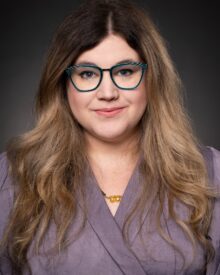
MacKenzie Shinde
GME Emergency Medicine Program Administrator
Phone: 214.820.6587
Fax: 214.865.3699
Email: [email protected]
Emergency Medicine Residency
Baylor University Medical Center
3500 Gaston Avenue, Roberts Building
Dallas, Texas 75246
